Gantt charts are one of the most important project management tools there are. That’s why project managers use them to manage projects of all sizes across industries such as construction, manufacturing, marketing and many more.
Since they’re so important, people use a variety of tools to create them. In this guide, we explain how to make a Gantt chart in PowerPoint.
Why Create a Gantt Chart in PowerPoint?
The main reason to make a Gantt chart in PowerPoint is that most people in your organization are likely to be familiar with this software. PowerPoint helps you create a simple Gantt chart that most people will be able to understand. In addition, PowerPoint is a common software that most people both inside and outside of your organization are likely to use, which makes sharing files easy.
However, PowerPoint isn’t project management software and therefore PowerPoint Gantt charts serve only one purpose, which is to provide a visual representation of your project for a presentation. One of the main drawbacks of them is that they need to be manually updated every time and lack many features that project managers need.
If you’re looking for a fully featured Gantt chart, try ProjectManager. ProjectManager’s Gantt chart lets you plan, schedule and track your projects from start to finish. Its features include assigning tasks to team members, identifying task dependencies, tracking costs, finding the critical path, and much more. ProjectManager also offers other project management tools such as kanban boards, real-time project dashboards, timesheets and project reports.
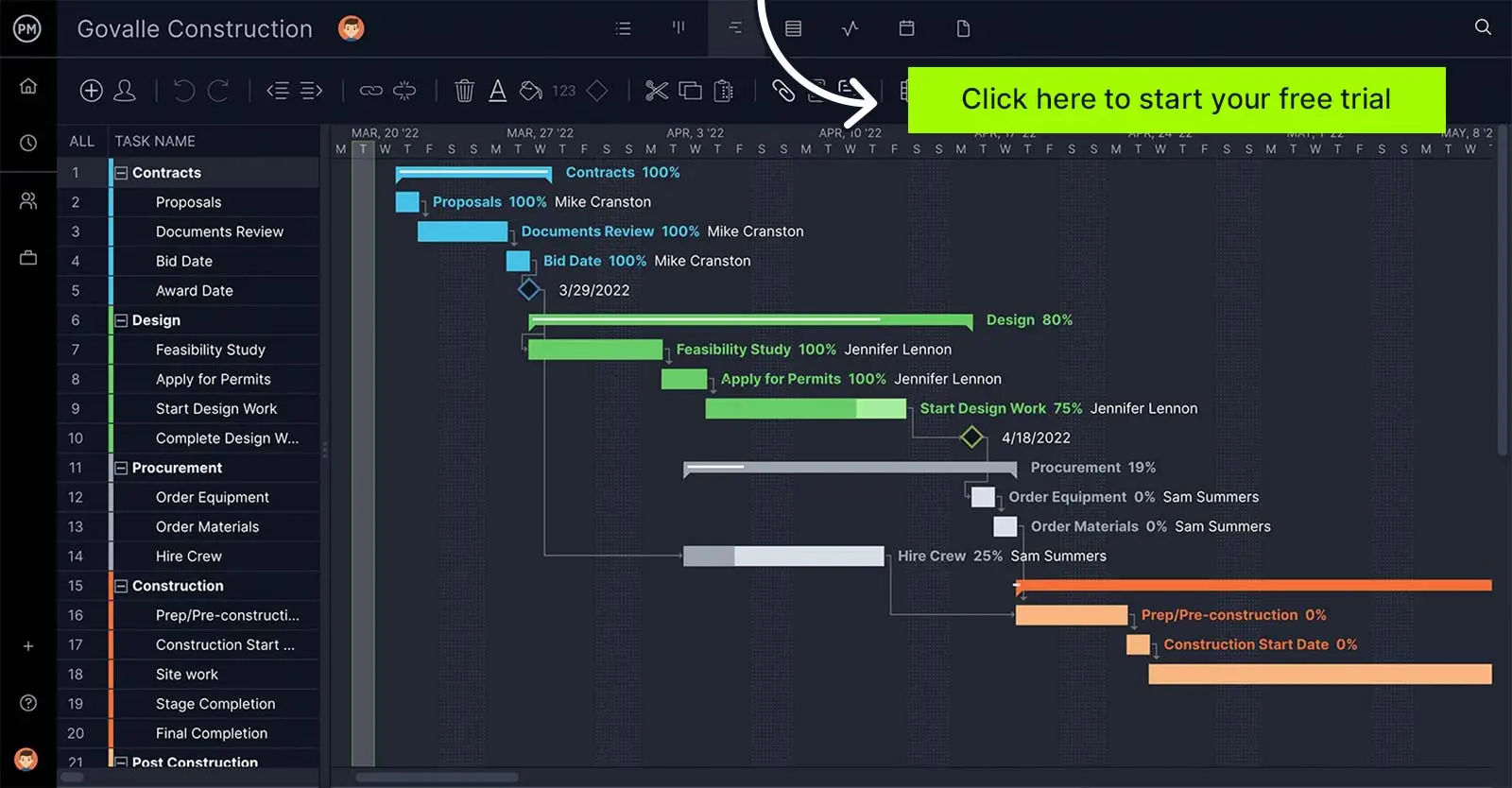
Having said this, PowerPoint Gantt charts can still be useful whenever planning a presentation for your team members or even project clients. Now, let’s jump into the steps to make a Gantt chart in PowerPoint.
How to Make a Gantt Chart in PowerPoint Step-By-Step
This PowerPoint Gantt chart tutorial will help you make a Gantt chart in PowerPoint from scratch. Follow the steps below to create a PowerPoint Gantt chart that shows tasks, their due dates and duration. Or if you prefer, you can simply download our free Gantt chart template for PowerPoint.
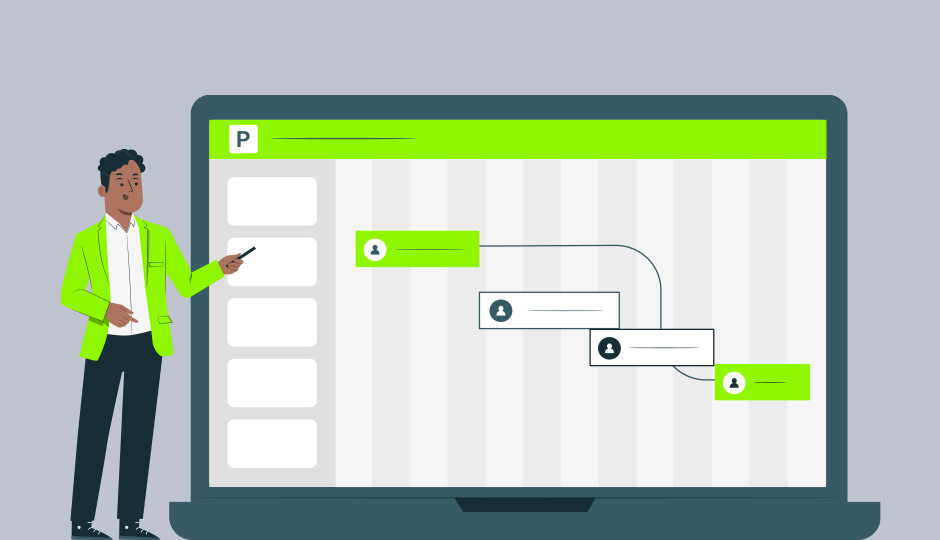
Get your free
PowerPoint Gantt Chart Template
Use this free PowerPoint Gantt Chart Template to manage your projects better.
Select “Blank” Layout
Let’s get started by opening PowerPoint and creating a blank presentation.
- a. Click on the layout button at the top left side of your screen.
- b. Select “blank” from the dropdown menu as shown below.
This will remove the title and subtitle text boxes so you can work on the slide.
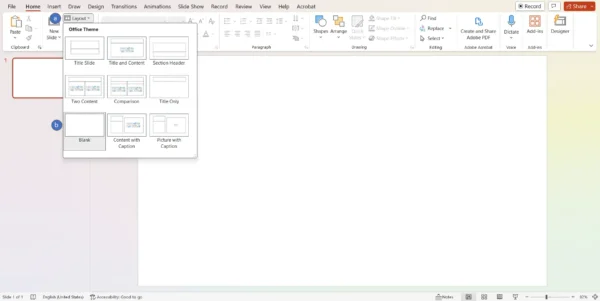
Insert a Stacked Bar Chart
Gantt charts are stacked bar charts, so we’ll create a PowerPoint stacked bar chart and customize it with project data.
- a. Click on the “Insert” tab at the top left side of your screen.
- b. Click the “Chart” icon.
- c. Once the “Insert Chart” pop-up appears, select the bar chart from the list of chart types.
- d. Then select the stacked bar chart as shown below.
- e. Click the “OK” button.
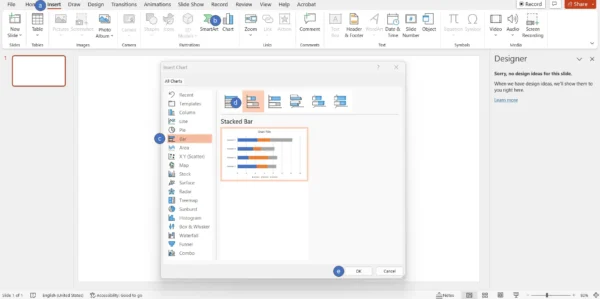
After following the steps above, a stacked bar chart should appear, along with a table to enter data. The table will have some values by default. You’ll need to edit them to customize your PowerPoint Gantt chart.
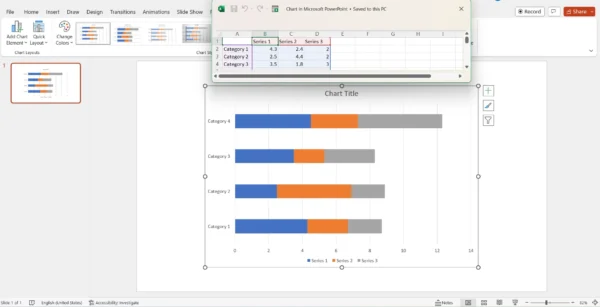
Enter Data for Your Stacked Bar Chart
Now that you’ve created a stacked bar chart, you’ll need to populate the table with project tasks, their due dates and their estimated duration. To do so, follow these steps:
- a. Rename the cells under column “A.” For this example, we’ll simply call them task 1, task 2, task 3 and task 4.
- b. Rename the cells on row 1 as shown below to show the tasks’ due dates and duration.
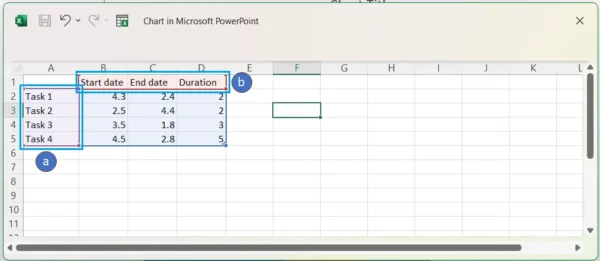
Format Your PowerPoint Gantt Chart Data Table
- a. First, select the “start date” and “end date” values on columns B and C.
- b. Right-click on the selected cells. A dropdown menu will appear. Now click on “Format cells…”
- c. Select Date from the category list.
- d. Choose the sample as shown below.
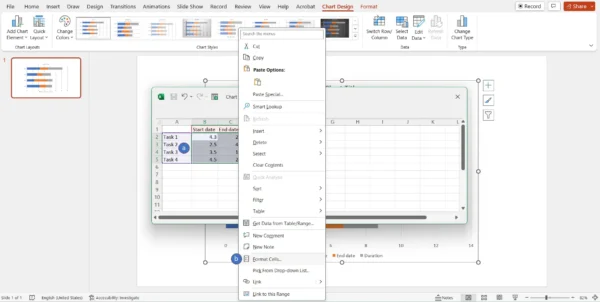
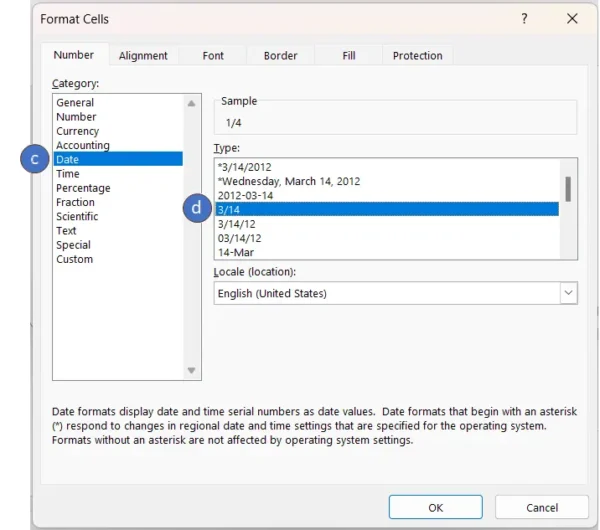
Add the Actual Due Dates for Your Tasks
Delete all the default values that were automatically generated for your PowerPoint Gantt chart. Add the due dates for each of your project tasks. In this PowerPoint Gantt chart example, we’ve selected random dates from January as shown in the image.

6. Create a Formula to Calculate the Duration of Each Task
To create your task duration formula, click cell D2, then enter a “=” symbol. Next click on C2, add a minus symbol “-” and then click on cell B2. Copy and paste this formula into all cells in column D of your table.
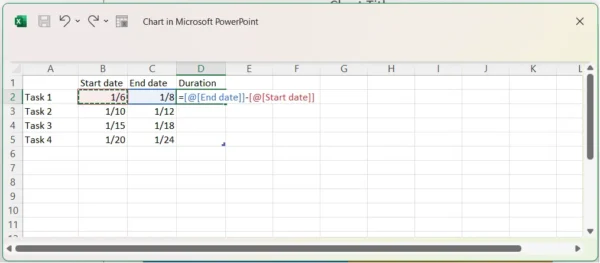
After creating this formula and pasting it into all cells in column D, your table should look like this. It now shows the duration for each task based on their start and end dates. The information you enter in this data table will populate your PowerPoint Gantt chart.
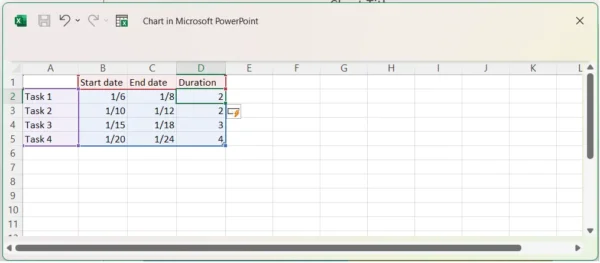
Format Your Stacked Bar Chart
Now that you’ve added the project tasks, due dates and task duration to your data table, it’s time to do some formatting to turn your stacked bar chart into a Gantt chart for PowerPoint.
- a. Click on the filter icon at the right side of the stacked bar chart
- b. Unmark the “End date” checkbox
- c. Click the “Apply” button
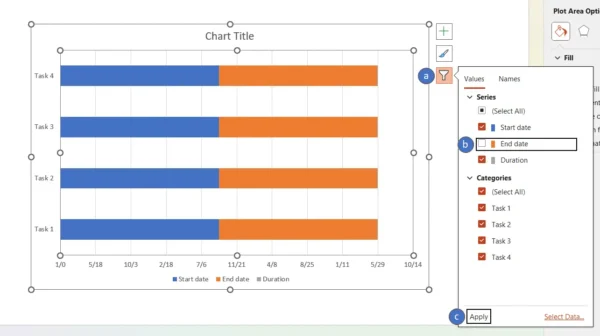
Once you’ve taken the steps above, the stacked bar chart should look like this.
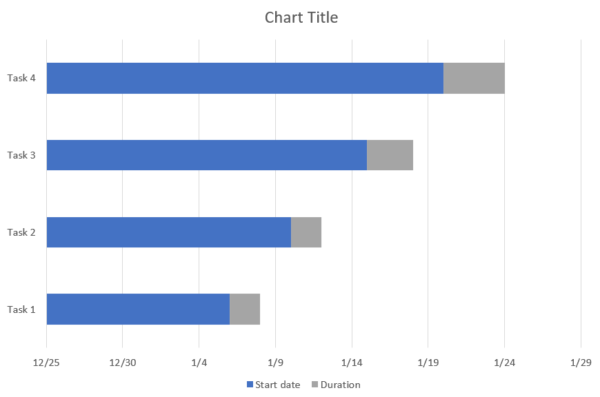
It’s time to hide these blue bars to turn the stacked bar chart into a PowerPoint Gantt chart.
- d. Click on one of the blue bars, which will select all of the blue bars. Then, right-click one of the blue bars you’ve selected
- e. Click on the “Fill” button
- f. Select “No fill”
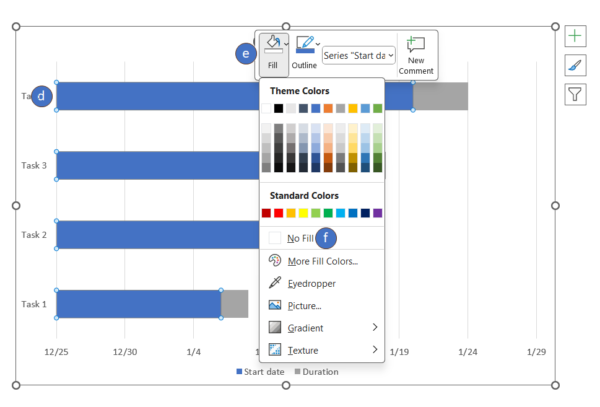
At this point, your PowerPoint Gantt chart should look like this. As you might notice, the tasks are in the wrong order so they need to be organized.
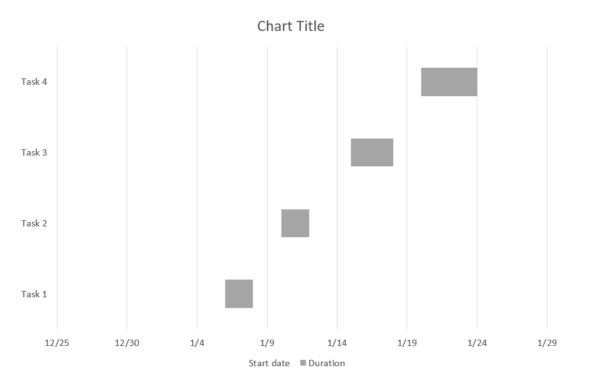
Organize Project Tasks in the Right Order
- a. Double-click any task name
- b. Click the bars icon at the right side of your screen
- c. Click “Axis Options”
- d. Click the “Categories in reverse order” checkbox
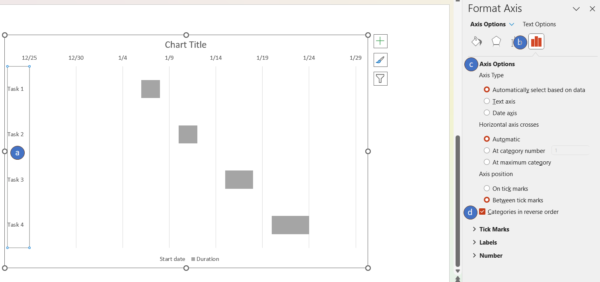
Customize Your PowerPoint Gantt Chart
Now that you have a working Gantt chart for PowerPoint, you might want to make changes to how it looks. You can edit the title and choose a different color for each taskbar to make it easier to differentiate.
Editing the title
To edit the title, click twice on the title and enter a new title. For this example, we’ll go with “PowerPoint Gantt Chart.”
Editing the bar colors
- a. Click twice on the bar you want to edit. Make sure only one of them is selected. Then, right-click it.
- b. Click on the “Fill” icon
- c. Select a color

After taking all these steps, your PowerPoint Gantt Chart should look like this. You may now add extra tasks or edit their due dates if needed by opening the data table.

Gantt Chart Template for PowerPoint
Making a Gantt chart in PowerPoint is a time-consuming task that might be overwhelming for some users, so we’ve created a free PowerPoint Gantt chart template to help you with this process.
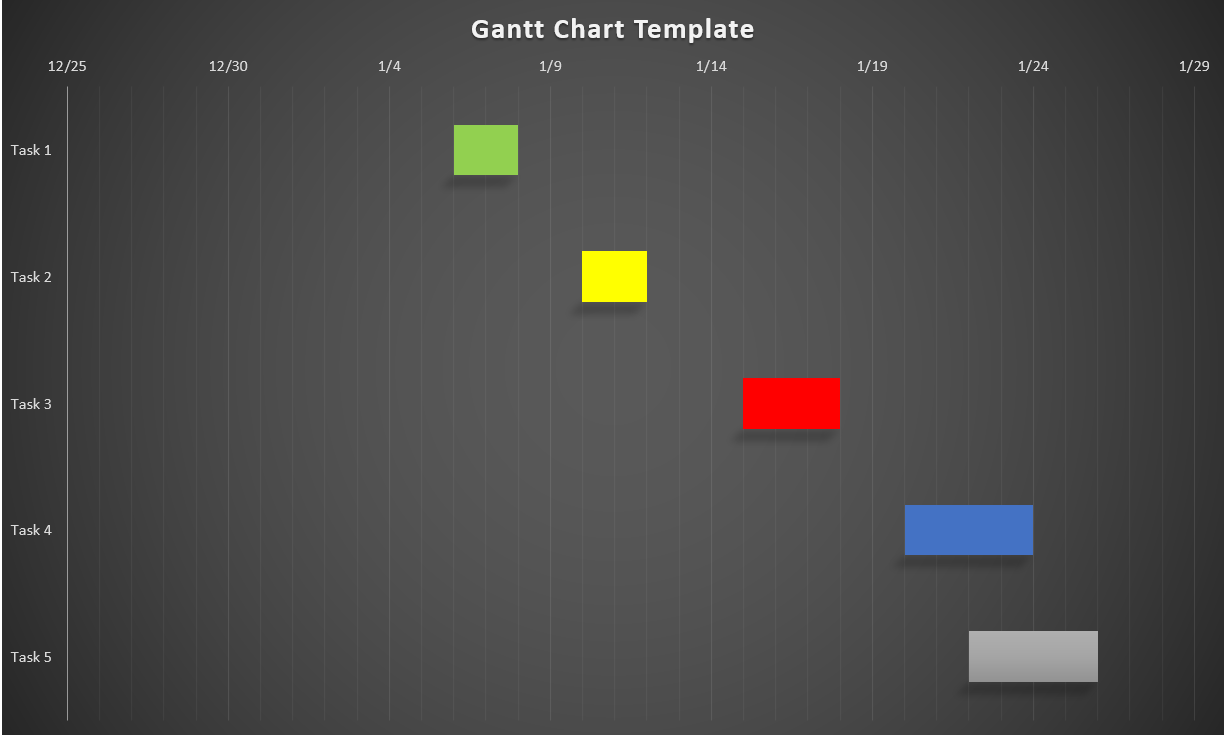
If you find templates useful, you might also be interested in our library of free project management templates for Word and Excel. There’s a template for every step of your project.
Import Your PowerPoint Gantt Chart Into ProjectManager
If you’ve already created a Gantt chart in PowerPoint, you can easily export the data directly into ProjectManager. This allows you to collaborate with your team in real time, set baselines, identify the critical path and so much more.
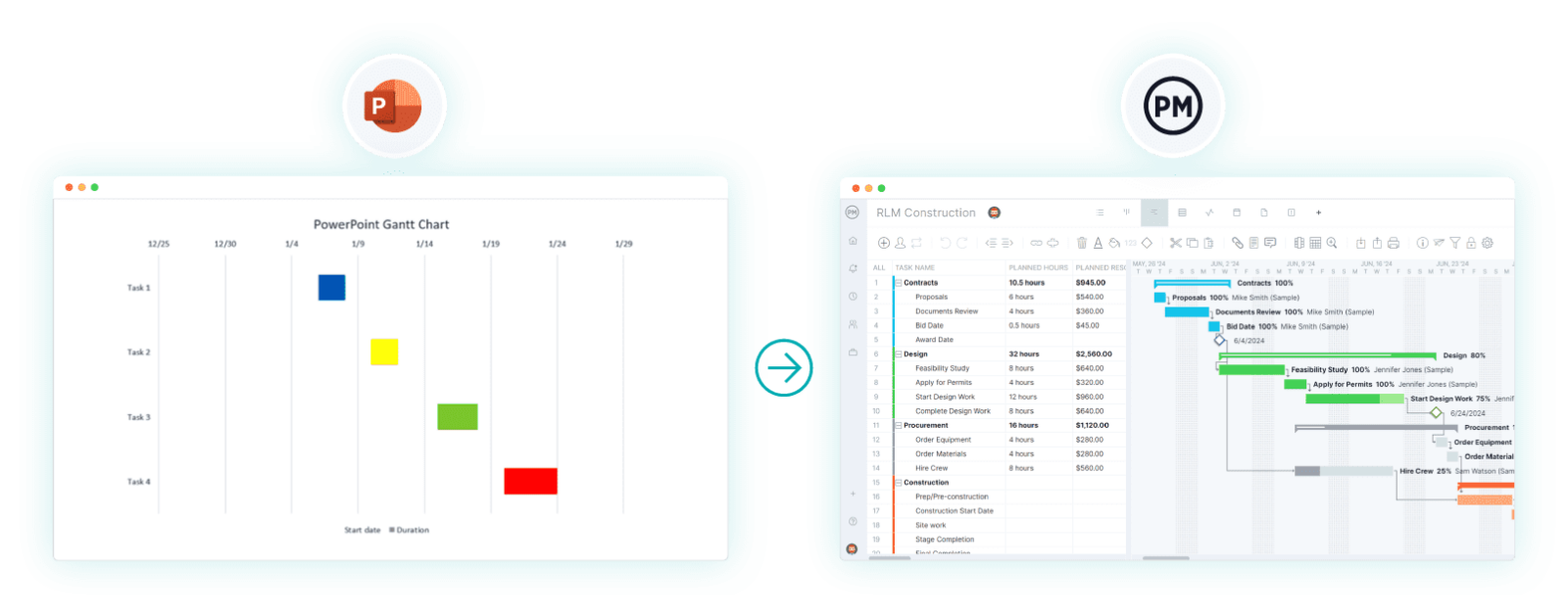
ProjectManager’s Gantt Chart Is Better Than PowerPoint Gantt Charts
While our PowerPoint Gantt chart template is a helpful tool, it can’t compete with a fully featured, online Gantt chart. As stated above, ProjectManager’s Gantt chart is a project management tool designed to help you plan, schedule and track projects of any size. It’s the perfect tool to create project schedules, monitor your project and collaborate with your team in real time. Here are some of its key features.
Track Progress & Costs
ProjectManager’s online Gantt chart shows the percent of completion of each task in real time so you know can accurately track the progress of your project. ProjectManager’s Gantt chart also helps you track costs based on the hourly rate of each of your team members.
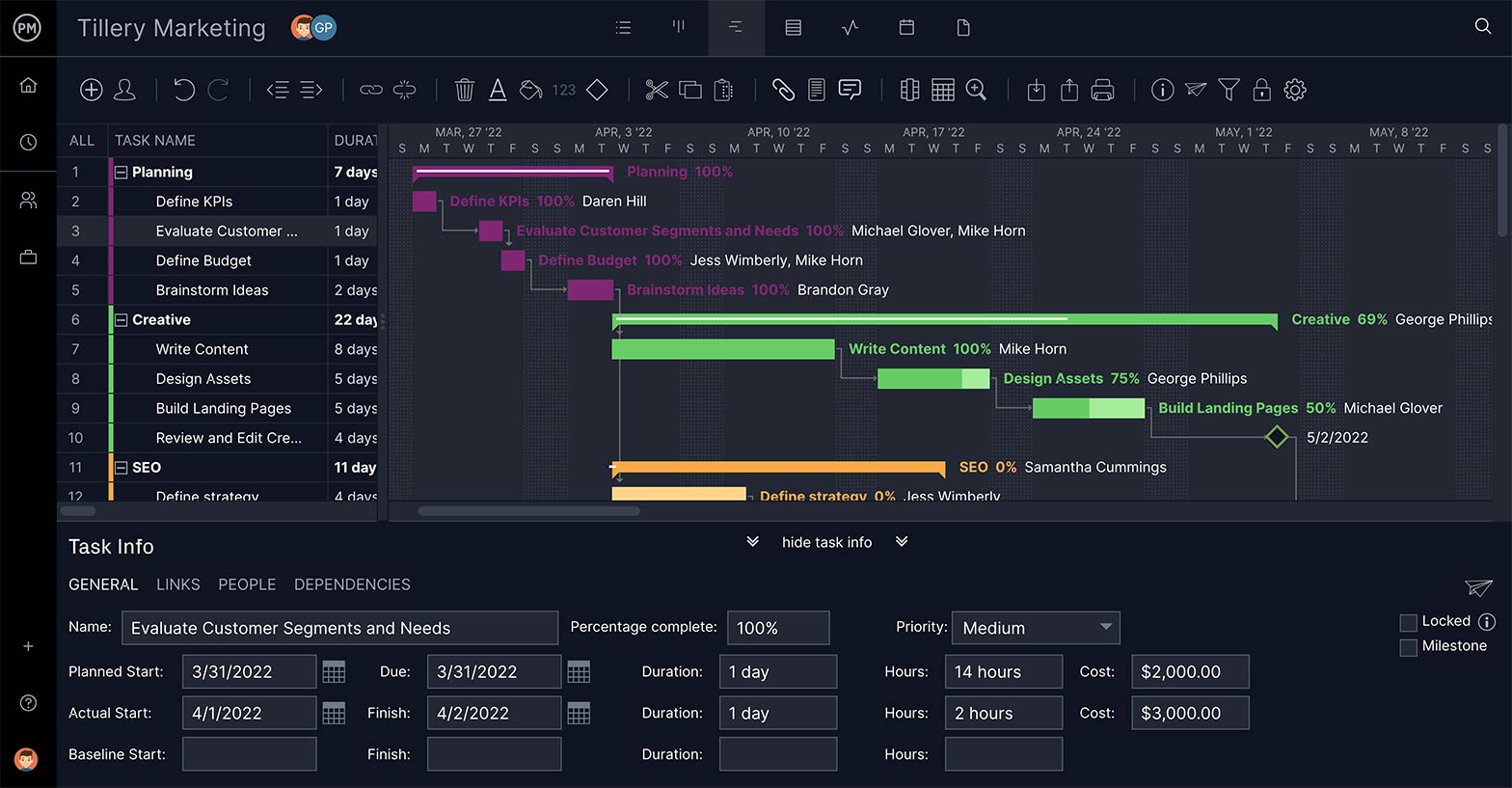
Set Task Dependencies
As a project manager, you must have a clear understanding of task dependencies in order to create a realistic, accurate project schedule. This is because task dependencies determine the order in which tasks should be completed. For example, some tasks can’t start unless a preceding task has been completed. ProjectManager’s Gantt chart lets you define four types of task dependencies so you can schedule any project.
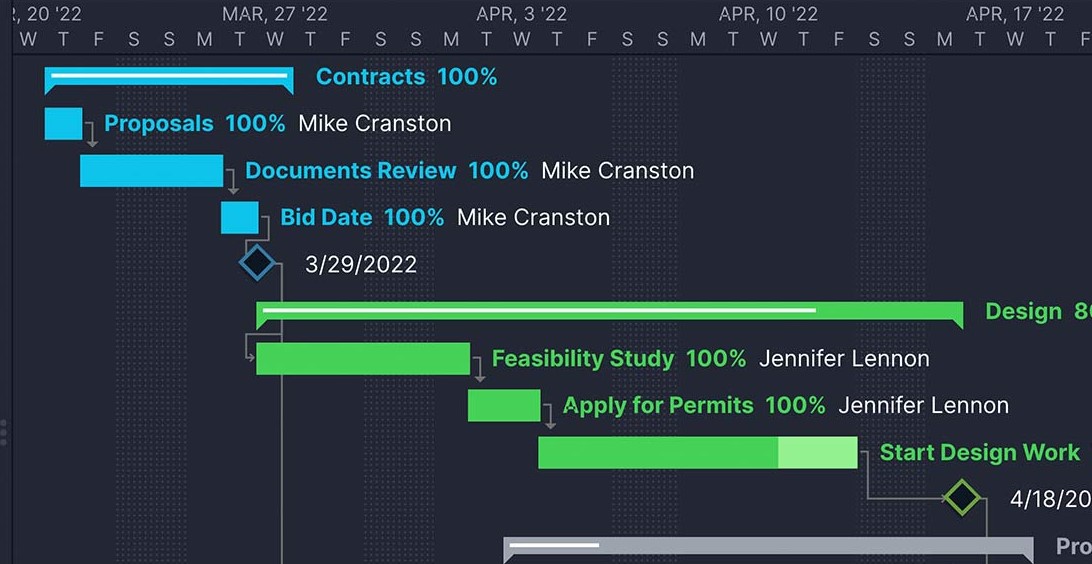
Find the Critical Path
Finding the critical path of a project is a very important project planning step because the critical path allows project managers to estimate the expected duration of a project. ProjectManager’s Gantt chart automatically finds the critical path based on your tasks and their due dates so you don’t have to make any calculations.
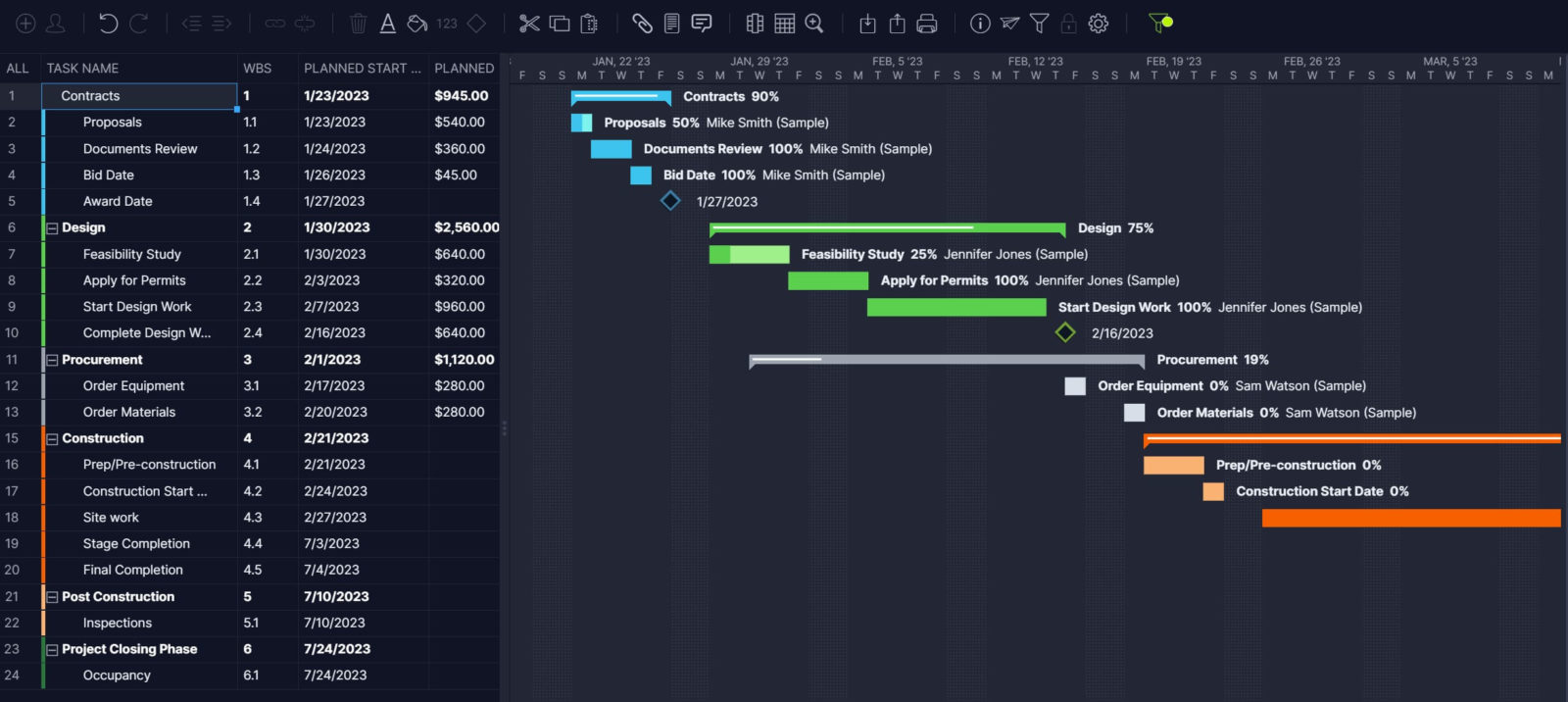
Related Gantt Chart Content
- Free Gantt Chart Excel Template
- How to Make a Gantt Chart In Excel Step-By-Step
- How to Make a Gantt Chart in Google Docs (Template Included)
- How to Make a Gantt Chart in PowerPoint (Template Included)
- How to Make a Gantt Chart in Google Sheets (Template Included)
- Microsoft Project Gantt Chart: A How-to Guide With Pros, Cons & Alternatives
- Microsoft Planner Gantt Chart: How to Make a Gantt Chart in Microsoft Planner
ProjectManager is robust project management software equipped with multiple project management views to help you manage every aspect of your project. Choose between Gantt charts, kanban boards, project dashboards and other award-winning project management tools. Get started for free today.

